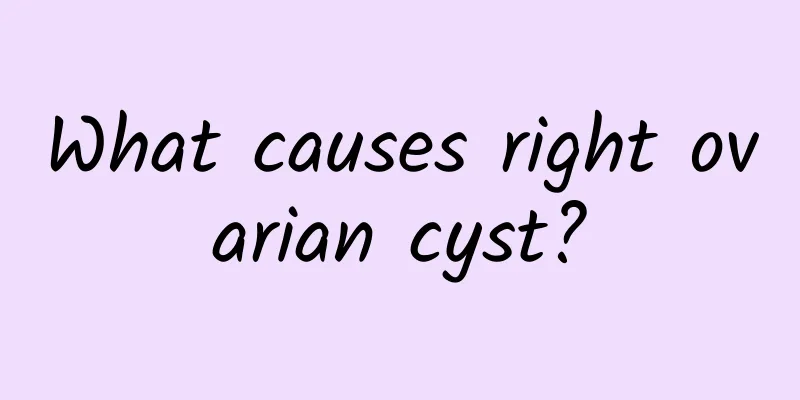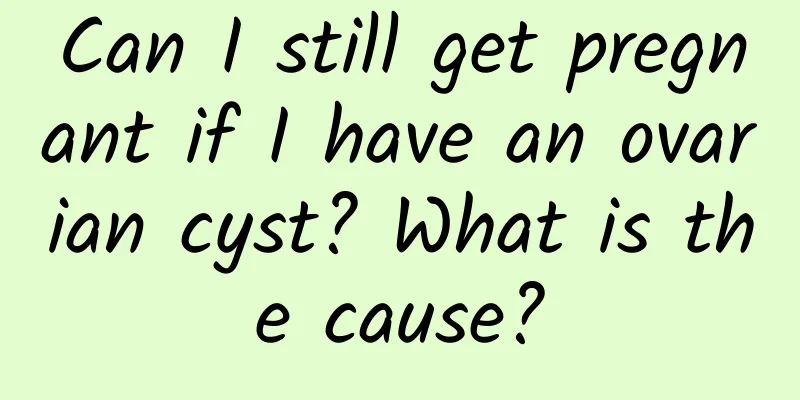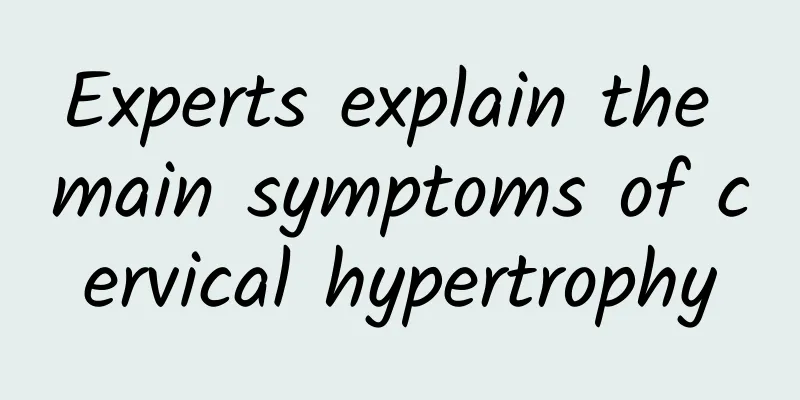What causes right ovarian cyst?

|
The causes of right ovarian cysts may include genetic factors, environmental influences, abnormal physiological state, and pathological or hormonal imbalances. The specific causes vary from person to person, and lifestyle and underlying diseases may also induce them. Most of these cysts are usually benign and can be treated with medication, regular monitoring or surgery. In severe cases, timely medical treatment is required. 1. Genetic factors: Some ovarian cysts may be related to genetic factors. If there is a family history of polycystic ovary syndrome (PCOS) or other ovarian diseases, the risk of right ovarian cysts may increase. Genetic factors can affect the regulation of hormone levels in the body and increase the possibility of abnormal development of follicles. It is recommended that women with a family history undergo regular gynecological examinations to detect risks early. 2 Environmental factors and lifestyle: External environmental factors, such as a diet that is too refined, high-sugar and high-fat foods, or long-term mental stress, can also interfere with the normal functioning of the endocrine system and lead to cysts. Exposure to pollutants in the environment, such as pesticides and industrial chemicals, may increase the burden on the ovaries and induce cysts. It is very important to adjust the diet structure, such as consuming more low-sugar, high-fiber foods, avoiding overeating, and exercising appropriately to maintain metabolic balance. 3 Physiological factors and hormone imbalance: The normal function of the ovaries is to secrete hormones and support the development of eggs. Hormone fluctuations, such as high levels of estrogen or low levels of progesterone, may cause fluid accumulation in the follicles and form functional cysts. This is more common in women of childbearing age or premenopausal women. Mild functional cysts can disappear on their own within a few months through observation. In severe cases, endocrine regulating drugs, such as birth control pills, can be taken. 4 Pathological causes or related diseases: Some cysts that accumulate fluid or blood may be caused by endometriosis, ovarian tumors, or infections. Cysts under these pathological conditions may be accompanied by symptoms such as abdominal pain, irregular menstruation, or bloating. Unexplained, rapidly enlarging cysts should alert you to malignant diseases and require early ultrasound examinations or tumor marker testing. 5 Traumatic or surgical factors: When the ovarian tissue is damaged by external forces such as pelvic surgery, it may cause local inflammation and cyst formation. During the postoperative recovery period, you should pay attention to a light diet and follow the doctor's advice to prevent infection and avoid strenuous exercise too early. Right ovarian cysts may be caused by a variety of factors. The combined effects of lifestyle, genetics and physical condition cannot be ignored. If the cyst persists or obvious symptoms appear, you should seek medical attention immediately, use B-ultrasound to determine the nature and receive appropriate treatment. Regular gynecological examinations and healthy lifestyle habits are important measures to prevent cysts. |
<<: Left ovarian cyst with slight pain
>>: Is polycystic ovary polycystic?
Recommend
Poor appetite, love to drink cold drinks, and can’t lose weight? Nutritionist Huang Weijie: 5 dietary strategies to reduce fat and fight obesity
The hot and humid weather in autumn can still mak...
What are the symptoms of hyperprolactinemia?
Currently, the number of people suffering from hy...
What causes premature ovarian failure?
What causes premature ovarian failure? Premature ...
Experts answer the method of early diagnosis of ectopic pregnancy
The symptoms of early ectopic pregnancy are gener...
How to diagnose early cervicitis?
Female cervicitis is a common gynecological infla...
How can women prevent amenorrhea?
How to prevent amenorrhea? I believe many women h...
What are the main causes of vulvar leukoplakia
What are the main causes of vulvar leukoplakia? I...
Can I eat grilled fish during my period? It’s best not to eat spicy food
Grilled fish is a kind of food that many people l...
Is it expensive to treat congenital absence of vagina?
Experts say that congenital absence of vagina is ...
Eating salmon salad and drinking coffee can help you lose weight? 6 tips to increase metabolism and burn fat, understand them all at once
I often hear people who are trying to lose weight...
Can adenomyosis cause disease?
When the endometrium attacks the myometrium, it i...
How to prevent chronic cervicitis in life?
Cervicitis is divided into acute cervicitis and c...
Several major hazards of cervical warts
It is difficult to explain the harm of cervical w...
How to reduce the harm after abortion? There are 5 major risk factors in abortion
Abortion is used as a remedy for unplanned pregna...
What should we pay attention to when caring for dysmenorrhea?
Dysmenorrhea is the most distressing thing for wo...









